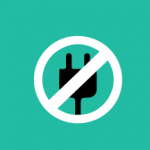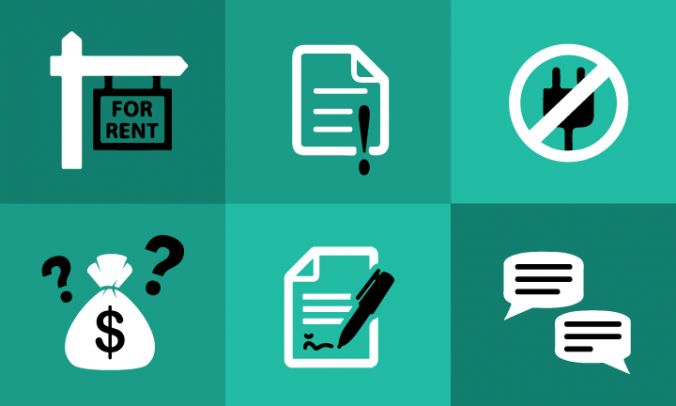On-bill financing is receiving a lot of attention as an innovative strategy to improve energy efficiency make people’s homes more comfortable. One of the major advantages of on-bill financing is that it can be offered to property owners who can’t cover the one-time investment in energy efficiency upgrades or aren’t able to qualify for traditional financing options. In this way, on-bill financing programs can be positive for consumers, but as with any consumer financing product, there are potential issues that program administrators should consider, including potential consumer concerns. In some cases, consumer advocacy groups have called into question whether sufficient consumer safeguards were in place to protect consumers within these programs.
For those interested in legal considerations around on-bill finance programs, there isn’t much reported case law to consider. This may be because either the programs are so new that there hasn’t been time for cases to be brought to trial or appealed. In this post, we briefly discuss some of the consumer issues that may arise in the process of designing or implementing an on-bill finance program.
 Renter Access to Programs
Renter Access to Programs
Providing equal and fair access to renters can be challenging. In renter occupied housing, the owner of the property will have the choice on whether to participate in an on-bill program. One of the advantages of an on-bill program over a loan in rental situations is that it provides a landlord with a method of providing tenants with energy improvements without taking over direct responsibility for the loan repayments. However, there are still disincentives for landlords that may limit access these programs to renters. For example, when a landlord uses on-bill tariff program (in which responsibility for repayment stays with the property and not the tenant) to renovate the property, and the tenant subsequently moves out, the landlord should disclose the on-bill agreement to future tenants. A landlord may perceive this disclosure as an obstacle to finding a new tenant. Further, in the lapse between tenants the landlord would be responsible for making the repayments.
 Disclosure
Disclosure
In a tariff-based program, the duty to repay the loan stays with the property. Thus, if a homeowner were to participate in a program and move before the loan was repaid the new homeowner would be responsible for the repayment in the form of the on bill tariff. At the time the improvement is made, the existing occupant will have the advantage of seeing that their overall electric bill remained constant or was even reduced. A subsequent occupant may have a harder time accepting that they have to pay an electric bill and a legacy loan payment on their bill, particularly if there are similar energy efficient homes available on the market that do not carry an additional legacy energy efficiency loan payment. Without proper disclosure requirements, these programs could result in future occupants protesting. Whether or not a home seller is required to disclose the nature of the loan to prospective buyers depends on the real estate guidelines for the state in which the transaction takes place.
 Shut-off Authority
Shut-off Authority
Shut-off authority is probably the most prominent consumer issue in on-bill financing. Since in some cases utility companies administer the loans, are the companies allowed to shut off a consumer’s power for non-payment? For many on-bill programs, the answer is yes. However, what if the consumer pays for their energy usage but does not pay the loan portion? Under the PAYS program, the utility does have shut-off authority in this situation. It is important that on-bill financing programs have established avenues for addressing consumer grievances; when consumers withhold loan payments it might be because they have a problem with how the loan is being administered.
 Performance Assurance
Performance Assurance
The goal of most on-bill programs is for the energy bill and repayment to be equal to or less than the energy bill prior to the improvement. In some programs, such as the Rural Energy Savings Program Pilot in South Carolina, the post-improvement bills are much lower, and thus consumers ended up paying much less than they had paid before even with the loan repayment included. However, many consumers might be reluctant to participate in an on-bill program because of the fear that they might end up having to pay higher bills. To assuage these concerns, programs can offer audits or assessments that will determine how much the consumers will save by making the suggested improvements. Programs offering these audits include the New York On-Bill Recovery Loan Program and Clean Energy Works Oregon.
In addition, heating and cooling improvements can involve mechanical systems that can fall into disrepair or be influenced by occupant behavior (for example, a new thermostat operated incorrectly). Improvements that do not perform as predicted could lead to a situation in which a consumer pays more than they expected after the improvement. To address this concern, the Rural Energy Savings Program in South Carolina offered an additional audit after the improvements were installed in order to ensure that they were working properly. These audits can help ensure future savings and incentivize higher consumer participation rates.
 Contractual Issues
Contractual Issues
Another issue to consider is which party has a contract with the company that provides the improvements. In many on-bill programs the program administrator contracts with builders to provide improvements to consumers. Under a normal loan schema, the consumer would have a contract with both the builder and the loan provider. In the traditional loan situation, the builder has a duty of care with respect to the consumer. If the builder is contracting directly with the program administrator, they will have a duty of care toward the administrator but not necessarily toward the consumer. However, the program administrator and the consumer have a contractual relationship with one another, and thus the program administrator owes a duty to the consumer. The duty of care is still present, it’s simply one step removed from where it would be in a traditional loan situation.
 Coordination with Existing Assistance Programs
Coordination with Existing Assistance Programs
A final consumer issue is how an on-bill program would impact eligibility for social programs. For example, LIHEAP is a federal social services program that assists low-income households in paying for home energy costs. These programs are administered by states, and states have flexibility in designing their programs. Consumers apply to their states program and, if eligible, are given grants to help cover their energy needs. It is unclear whether or not consumers participating in on-bill financing would maintain the same eligibility for LIHEAP payments they had prior to the energy improvements, possibly impacting their out of pocket expenditures. These issues are far from dealbreakers in most situations, but are important for administrators to identify and address in advance.
Overall, these issues can be addressed with proper planning and contracting. The programs tend to have very low default rates, and many have a positive impact on the communities they serve.
Jennifer Fredette is a 3L at the University of North Carolina School of Law specializing in Environmental Law.





Thanks for this helpful summary! For a further discussion of on-bill shut-off and consumer issues, see “Disconnection and On-Bill Repayment: An Analysis of Risks and Benefits,” https://app.box.com/s/93l9q23565s62qy63jbm/1/1824391077/16029678281/1
Thanks to the author of this article its really helped me to understood the pure meaning of on-bill finance programs and how its work. Please keep post this kind of article in the future.